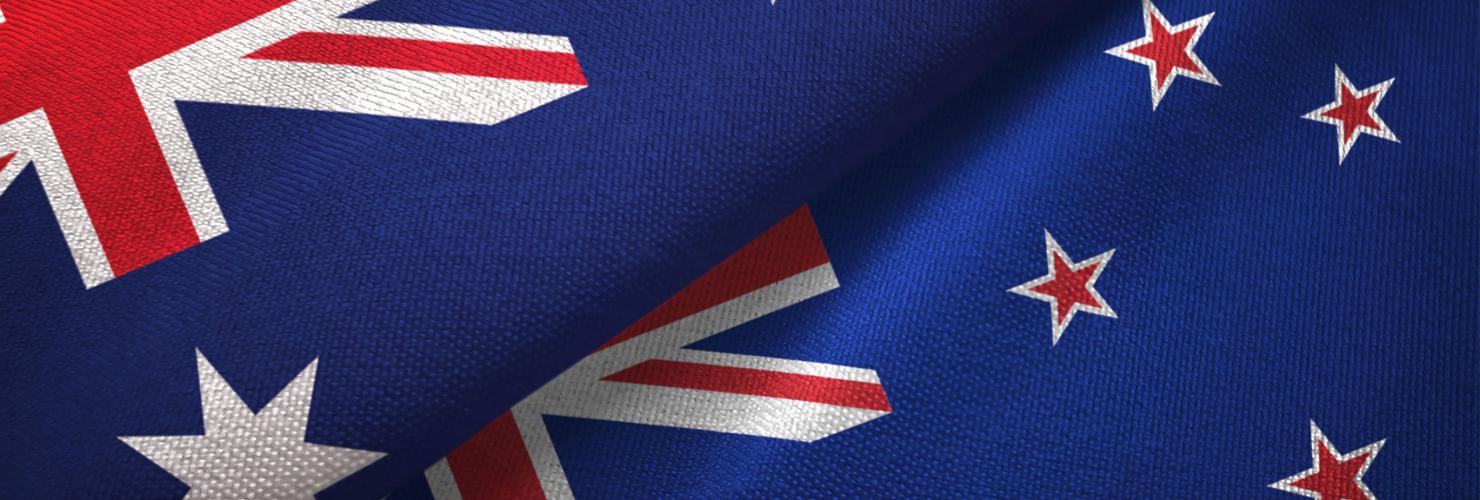

Australia and New Zealand recalibrate their China policies
In 2017, Australia readjusted its China policy to a more critical and firm position. 2018 New Zealand followed suit, but fear of deteriorating relations has since led Wellington to change to a more conciliatory course. The different sizes of Australia and New Zealand are an important factor in their differing policy outcomes.
The PRC’s intensifying authoritarian practices, assertive behavior in the South China Sea and state-led industrial-technological advances are all fueling concerns that have prompted several longstanding ‘Western’ democracies to rethink their China policies. In the United States, the Trump administration has decided on confrontation. Debates have become particularly heated on how to deal with China’s telecommunications giant Huawei in the transition to fifth generation (5G) mobile networks. The security and competition-related arguments conflict with one another and so far each country’s still largely tentative answers differ.
Developments in Australia and New Zealand deserve attention when assessing policy options as both countries have adjusted their China policies in the last two years, with differing outcomes.
Vital economic relationships
Australia and New Zealand both benefit enormously from economic exchanges with China. Bulk commodity exports are central to both economic relationships; iron ore and coal from Australia and New Zealand’s agricultural and forestry products. Roughly a quarter of Australia’s total trade consists of trade with China in goods and services. For New Zealand, China accounts for one fifth of total trade. The number of students and tourists arriving in both countries from China has also increased substantially in recent years, bringing more than purely economic links.
Nonetheless, it is worth remembering that both countries have simpler economic relations with China than either Germany or the United States. Foreign direct investment, questions of technological leadership, and intellectual property rights play a much more limited role.
Commonalities and differences
Given Australia and New Zealand’s many commonalities, their military alliance, and the close integration of their economies, one might expect the two countries to speak the same language when it comes to China.
However, they have different positions in the international system and different security relations with the United States. Australia is a middle power and a close US ally in the Indo-Pacific, a status that confers more options and more obligations. New Zealand is a small power, and hence more dependent on the goodwill of big powers. New Zealand has also long sought to pursue an ‘independent’ foreign policy with the goal of avoiding being drawn into big power conflicts.
Australia resets its China policy
Australia reset its China policy during 2017 and 2018, by implementing changes in both domestic and external affairs. Scandals over dubious donations to Australian politicians from businessmen of Chinese descent, as well as other attempts to influence public affairs, led Australia’s federal government in Canberra to enact legislation in 2018 making foreign interference in domestic politics a crime. Foreign lobbyists now have to register. Foreign donations were outlawed – bringing Australian law in line with other liberal democracies such as the US, Canada and the UK - and the disclosure threshold for political donations was lowered. In 2017, parliament blocked a planned extradition treaty with China. In 2018, the federal government responded to US concerns by excluding Huawei and ZTE from the planned roll out of 5G in Australia.
In matters of defense and diplomacy, more robust policies are being pursued. Senior cabinet ministers publicly criticized PRC naval activities in the South China Sea in 2017. New state-of-the art submarines and frigates feature prominently in Australia’s large-scale defense procurement plans. Canberra has also significantly stepped up economic aid and diplomatic efforts towards the South Pacific to counter China’s increasing diplomatic and economic presence in the region, and the risk of a possible future PRC military presence. Australia has agreed to set up a joint US-Australian naval base on Manus Island, in Papua New Guinea, taking pre-emptive action against any risk of future Chinese bases.
The PRC government reacted to Canberra’s new, firmer tone by freezing high-level political exchanges until late 2018. Australian coal shipments to China have faced custom clearance delays this year, which exporters and analysts suspect are politically motivated.
New Zealand’s shifting China policy
New Zealand’s long-standing approach has been to avoid criticism of China so as not to endanger economic ties. It changed course when a new center-left minority coalition took power in October 2017, replacing a three-term conservative government. The coalition consisted of Labour and the New Zealand First supported by the Greens. The foreign affairs and defense portfolios went to the small, moderately populist NZ First party.
Policy towards China began to change notably in 2018. First came a high-profile government paper on defense that took a critical tone towards China. Soon after, the new government decided to invest substantially in military hardware: the biggest ticket items were four state-of-the-art Boeing P-8A Poseidon maritime patrol aircraft.
Foreign Minister Winston Peters also announced a significant increase in NZ’s economic aid to, and diplomatic presence in, the South Pacific. Peters implored the US to step up its efforts in the South Pacific, even drawing a parallel with US engagement there in World War II. Moreover, he called into question his country’s participation in China’s Belt and Road Initiative (BRI). By late 2018, the government had enacted new foreign investment regulations and blocked Huawei’s participation in a first local 5G project. Finally, the New Zealand intelligence agency GCSB named China as a source of cyber-attacks, something they had previously refrained from saying.
However, China’s pushback has led the New Zealand government to focus more on damage control in the months since spring. The PRC has voiced its displeasure through various channels. The conservative National Party opposition in New Zealand chimed in, blaming the government for the deterioration in relations.
Prime Minister Jacinda Ardern’s first official visit to China – which had been postponed for a long time due to ‘scheduling problems’ – finally took place in April this year. Ardern emphasized that China is a valued partner and pledged there would be no discrimination against Chinese companies operating in New Zealand. Her visit happened a few weeks before the second BRI Forum in Beijing, which trade minister David Parker took part in, returning with proposals to cooperate with China in the BRI framework. Both governments demonstrated their shared interest in putting bilateral relations back on a more even keel.
Although diplomatic efforts have helped calm things down, New Zealand-China relations are unlikely to regain their former luster. The state-run Chinese media’s clumsy attempts to drive a wedge between Australia and New Zealand contribute to this. More importantly, the government and the broader public in New Zealand no longer see China only through the lens of economic opportunities. Arguably this is a healthy development. As one long-term steward of New Zealand’s relations with China points out, ‘We have not changed, China has.’
The views expressed in this article represent the views of the author and not necessarily those of the Mercator Institute for China Studies.